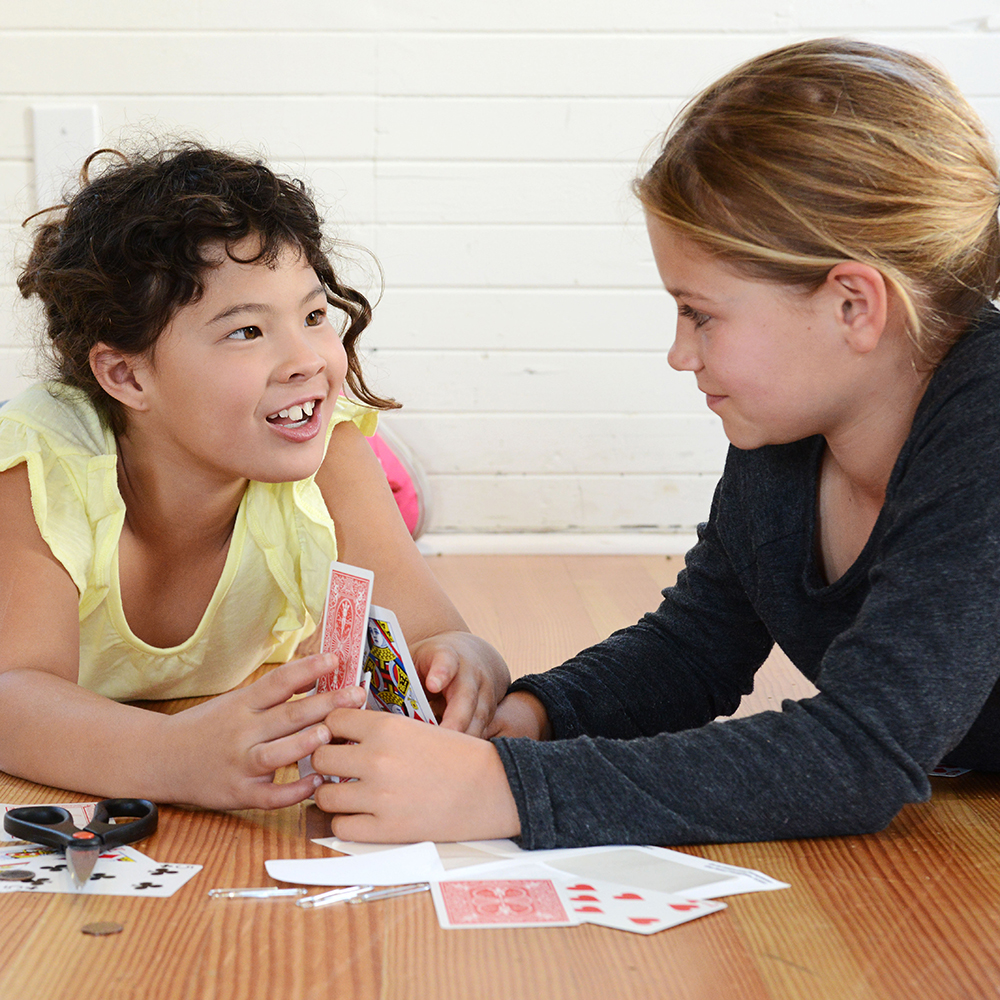Build a freestanding tower that is as tall as possible using a deck of playing cards and other common materials. This activity introduces children to trial-and-error, a large component of the creative process.
Materials Required
- 1 deck of playing cards
- 3 rubber bands
- 6 paper clips
- 4 mailing labels
- Yardstick (for measuring only)
- Scissors (one per person, for cutting only)
- Pennies (optional)
- Timer
Instructions
- Without touching the deck of cards or other materials, brainstorm a building strategy for two minutes. How can these materials be used together to construct a freestanding tower that is as tall as possible?
- Set a timer for 15 minutes and use the cards, rubber bands, paper clips, and mailing labels to build the tower. Use the scissors to cut only. They should not be used as part of the final structure.
- When time is up, measure the height of the tower. How tall is it? If playing in groups, have each group share the height of their tower and strategies used to build it.
Additional Tips
Try these add-on activities:
- Test how structurally sound the tower is by adding weight to it. Add pennies (one at a time) anywhere on the tower. Does the tower hold? If not, how could it be built to support the weight of the pennies? Try building another tower that can support as much weight as possible.
- Build on different surfaces. Try building on tile, carpet, or grass. Which is easiest to build on? Which is more difficult?
- Name the tower and make up a story about it. Does anyone live in it? How old is it? Share the story with a friend.


